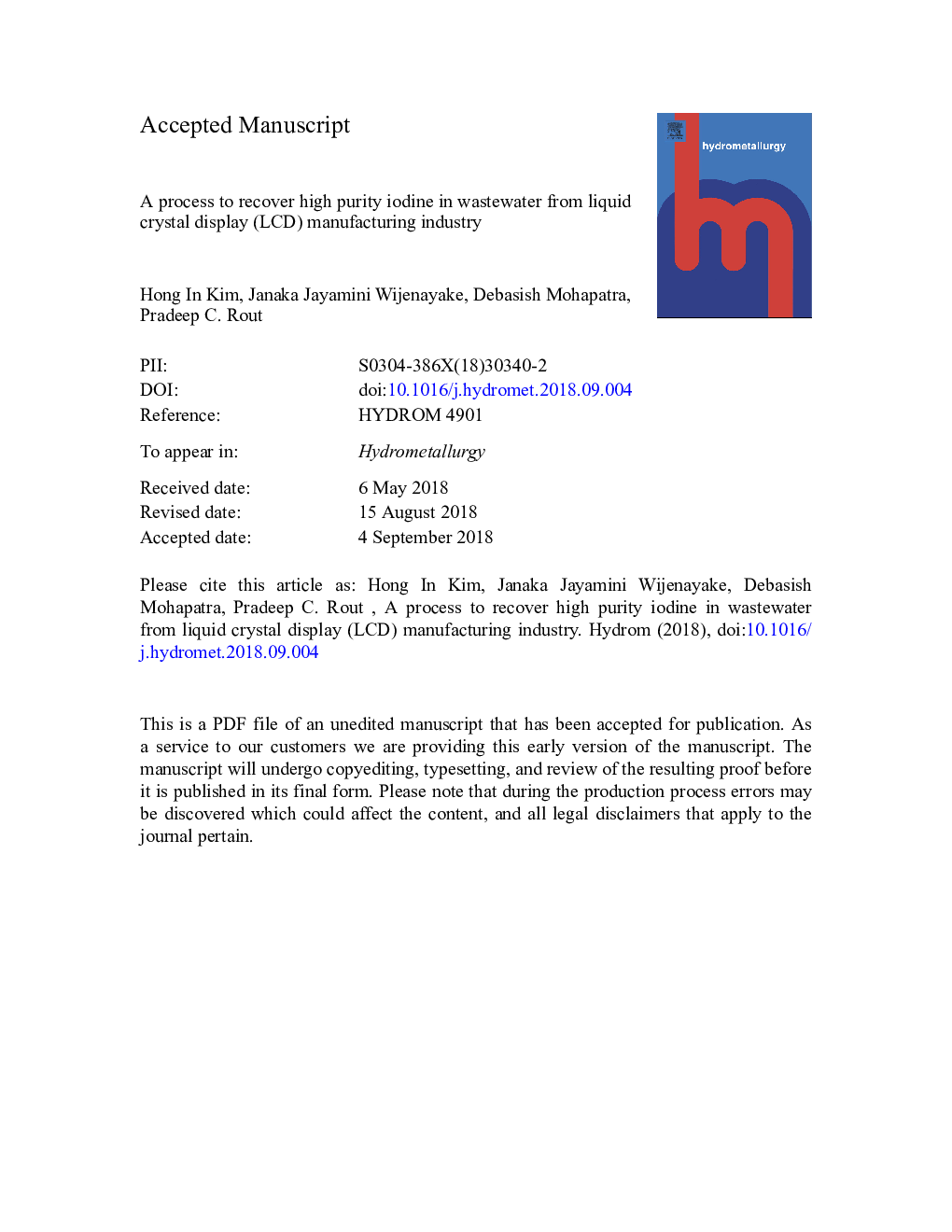| Article ID | Journal | Published Year | Pages | File Type |
|---|---|---|---|---|
| 10139064 | Hydrometallurgy | 2018 | 26 Pages |
Abstract
The polarization process during LCD manufacturing generates wastewater containing significant amounts of valuable elements such as iodine and boron. The present paper outlines a process to recover iodine value from wastewater using oxidative precipitation followed by a solvent extraction (SX) technique. With H2O2 as an oxidant, 95% of iodine was precipitated out at a pH of 0.9 from a wastewater bearing 10.2â¯g/L of iodide and 0.82â¯g/L of boron. The remaining iodine, which could not be precipitated due to its low concentration, was recovered by SX using xylene as an organic solvent diluted in kerosene. Quantitative extraction and stripping were achieved using 0.05â¯M xylene and 0.1â¯M ascorbic acid at O:A ratios of 1:3 and 6:1, respectively. The purity rates of the iodine produced by the precipitation and SX routes were 99.3% and 99.8%, respectively. The highest separation factor achieved by the iodineâboron system was 28,900 at an equilibrium pH value of 0.5. The present process is economically and environmentally friendly and therefore, can be used as an alternative industrial technique to recover iodine from wastewater.
Related Topics
Physical Sciences and Engineering
Chemical Engineering
Chemical Engineering (General)
Authors
Hong In Kim, Janaka Jayamini Wijenayake, Debasish Mohapatra, Pradeep C. Rout,
